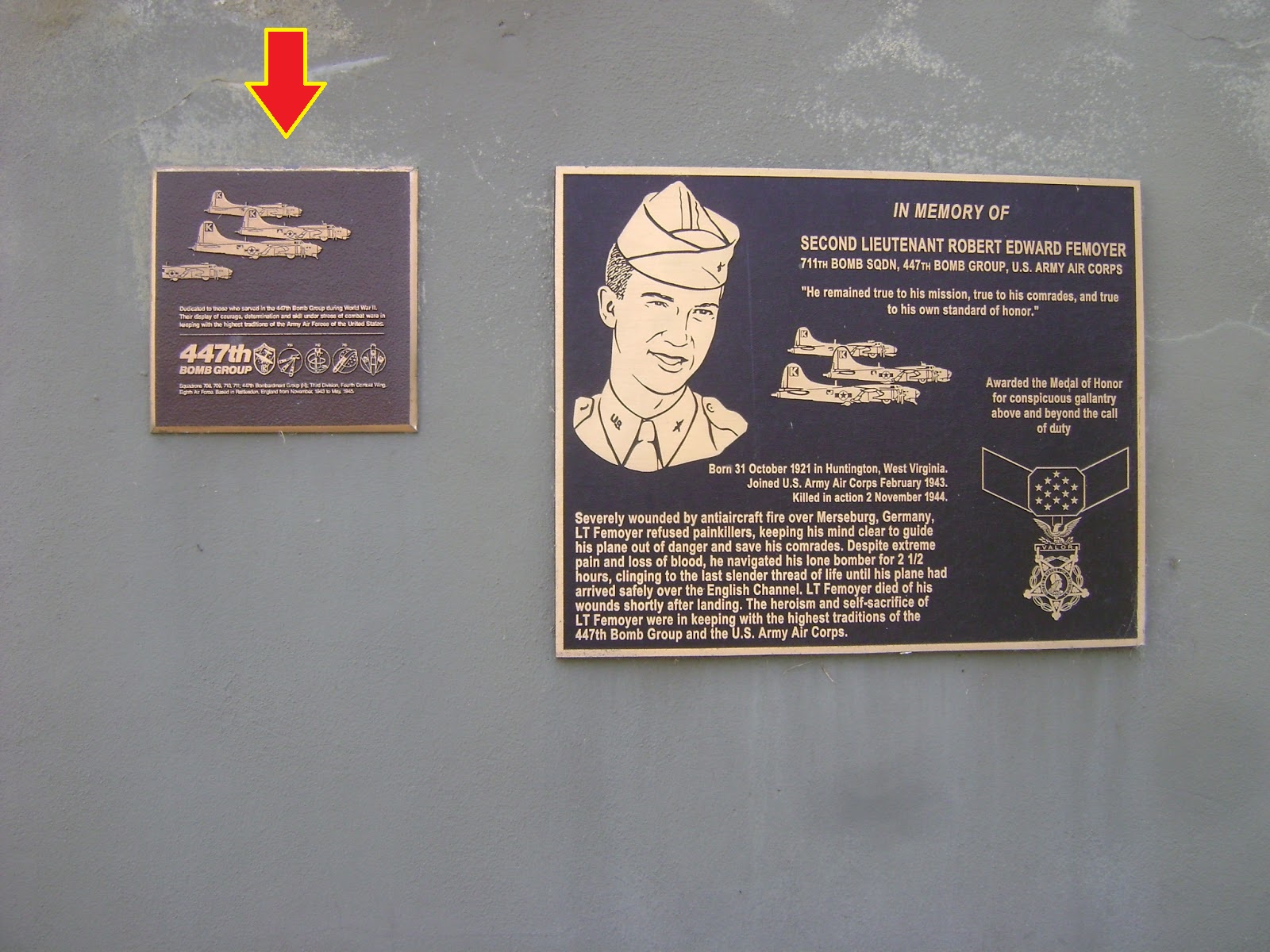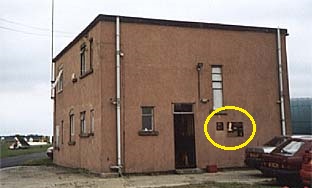447th Bomb Group Plaque - Rattlesden Gliding Club
Details:
Mounted on the exterior wall of the building beside the 2Lt Femoyer plaque.
A square metal plaque featuring four B17s in formation followed by the dedication message and then followed by the group and support units’ insignias. The plaque is inscribed in English in raised lettering. This plaque is identical to the one that is in the Rattlesden village church.
In June 1943, it was decided that the B-26 groups would be better placed to conduct operations from airfields further south, and exchange of bases with the B-17-equipped 4th Bombardment Wing in Essex was arranged. Rattlesden, however, remained without a combat unit until the 447th Bombardment Group (Heavy) arrived from Harvard AAF Nebraska on 29 November 1943. The 447th was assigned a group tail code was a "Square-K". Its operational squadrons were:
- 708th Bombardment Squadron (CQ)
- 709th Bombardment Squadron (IE)
- 710th Bombardment Squadron (IJ)
- 711th Bombardment Squadron (IR)
The group flew the Boeing B-17 Flying Fortress as part of the Eighth Air Force's strategic bombing campaign and served chiefly as a strategic bombardment organization. The 447th's first mission from Rattlesden was despatched on Christmas Eve and, during hostilities, another 256 missions were flown from the base.
The group helped to prepare for the invasion of the Continent by attacking submarine pens, naval installations, and cities in Germany; ports and missile sites in France, and airfields and marshaling yards in France, Belgium, and Germany. During Big Week, 20–25 February 1944, the 447th took part in the intensive campaign of heavy bombers against the German aircraft industry. Supported the invasion of Normandy in June 1944 by bombing airfields and other targets near the beachhead. Aided the breakthrough at Saint-Lô in July and the effort to take Brest in September. Pounded enemy positions to assist the airborne invasion of the Netherlands in September. Also dropped supplies to Free French Forces during the summer of 1944.
The 447th turned to strategic targets in Germany in October 1944, emphasizing sources of oil production until mid-December. 2nd Lt Robert Edward Femoyer, a navigator, won the Medal of Honor for action on 2 November 1944. While on a mission over Germany, his B-17 was damaged by flak, and Femoyer was severely wounded by shell fragments. Determined to navigate the plane out of danger and save the crew, he refused a sedative and, for more than two hours, directed the navigation of the bomber so effectively that it returned to base without further damage. Femoyer died shortly after being removed from the plane.
During the Battle of the Bulge, December 1944-January 1945, the group assaulted marshaling yards, railroad bridges, and communications centers in the combat zone. Then resumed operations against targets in Germany, attacking oil, transportation, communications, and other objectives until the war ended. During this period, also supported the airborne assault across the Rhine in March.
The group returned to Drew AAF Florida in August 1945, its personnel relieved from active duty and aircraft sent to storage. At Drew AAF the 447th was redesignated as the "447th Bombardment Group (Very Heavy)" and allocated to Strategic Air Command w/o/p/e as a reserve unit.
Source of information: www.warmemorialsonline.org.uk, Imperial War Museum War Memorials Register, en.wikipedia.org
Source of photos: eastangliamemorials.blogspot.com, www.controltowers.co.uk
Monument Text:
Dedicated to those who served in the 447th Bomb Group during World War II.
Their display of courage, determination and skill under stress of combat were in
keeping with the highest traditions of the Army Air Forces of the United States.
________________________________________________________________________
447th
Bomb Group
Squadrons 708 709 710 711; 447th Bombardment Group (H); Third Division, Fourth Combat Wing
Eighth Air Force. Based in Rattlesden, England. From November 1943 to May 1945.



